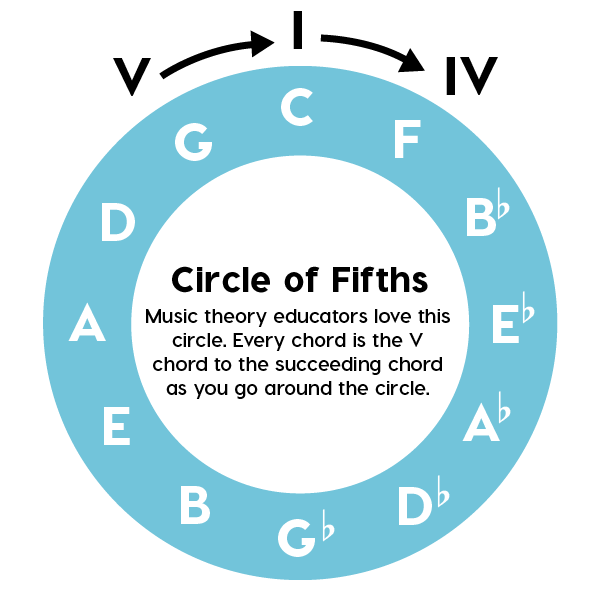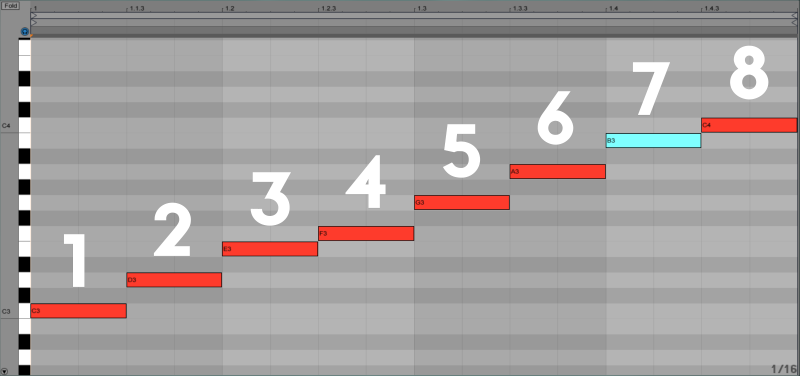+ Welcome to Soundfly! We help curious musicians meet their goals with creative online courses. Whatever you want to learn, whenever you need to learn it. Subscribe now to start learning on the ’Fly.
In the above video, courtesy of Soundfly’s very popular online course, Unlocking the Emotional Power of Chords, NYU and Montclair State University adjunct professor of music technology, Ethan Hein, explains the concept of the leading tone in music theory.
Music is all about creating tension and release, creating questions and then answering them with a resolution. As you move through the various scale degrees and chord shapes in any particular key, it’s important to be aware of the magnetism each note has back toward the tonic. In this way, composers can play with their listeners’ expectations of what should or could come next in a progression, no matter what style of music they’re writing.
This journey of expectations, and the emotional sentiments each chord brings to the key signature, is a complex yet powerful set of tools to understand how to use. Preview Hein’s course, Unlocking the Emotional Power of Chords for free, and read to learn more about utilizing the leading tone!
The Most Common Chords in Western Music
Throughout all of Western music, there is one “truth” that we encounter over and over again: the V chord leads to the I chord.
To hear this in context, all you have to do is think of a common nursery rhyme, like “Three Blind Mice” or “Mary Had a Little Lamb.” Most of these songs use a very simple harmony that just goes from I to V and back to I. We see this relationship throughout Western music, from classical to folk to the blues and beyond.
So why does it work so well?
Where Does the “Pull” Come From?
Imagine we’re in C major, so our V chord is G. The third of that G major chord is a B, which is also the seventh scale degree of a C major scale. We call the seventh scale degree of any major scale the leading tone. It’s a very descriptive name because the sound of it basically leads us to crave and expect a resolution up to the tonic.
When a V chord returns to I, it provides a sense of resolution that completely satisfies our expectations. In part, that’s because most of us have grown up hearing that relationship. The same way that our ears want to hear the C major scale arrive at C from B, so too do we want to hear the G chord land on C.
As producers, this relationship is useful for providing a secure sense of familiarity, an expected release in our music. It’s recognizable, simple, and direct, and can be used when trying to create a very obvious sense of home.
“Pop music is so boring. It’s all IV-V-I.”
We’ve all heard some form of this comment before. We’ve just seen how the V chord resolves to I because of that leading tone and because of our cultural expectations. Where does the IV chord come in?
The IV, V, and I chords are inextricably linked to each other by their relationship around what’s called the Circle of Fifths. If every V chord leads to I, then that I can also be a V for a different chord. That new chord just also happens to be the IV chord in the original key as well.
It’s almost as if fate has led these chords to each other…

At the end of the day, there’s no real magic here. V and IV chords offer a familiar touch of tension that resolves easily to the I chord, both because of the proximity of certain notes in the scale and simply because we’re used to it. At least in Western music, we’ve heard this relationship our entire lives, whether it’s in classical music (which often cycles harmonically through the circle of fifths, ending on V to I), the blues (which is based I, IV, and V chords), or rock music (which actually does use IV to V to I a lot).
Get 1:1 coaching on your songwriting from a seasoned pro.
Soundfly’s community of mentors can help you set the right goals, pave the right path toward success, and stick to schedules and routines that you develop together, so you improve every step of the way. Tell us what you’re working on, and we’ll find the right mentor for you!




